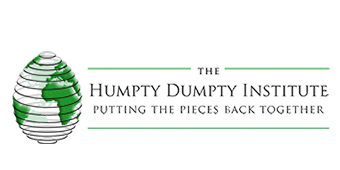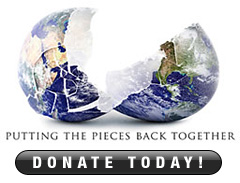Humpty Dumpty Institute In The Press
Mine Action Success Stories

The Humpty Dumpty Institute: Sri Lanka
Summer 2010
by Savithri Rodrigo
With the remnants of more than 25 years of war embedded in the country, Sri Lanka was in desperate need of clearance in 2006. A partnership among The Humpty Dumpty Institute, The HALO Trust and Land O’Lakes International Development has bettered the lives of the Sri Lankan people by clearing the land of explosive remnants of war and providing innovative techniques for milk production, while also allowing many to return to their homes after years of displacement.
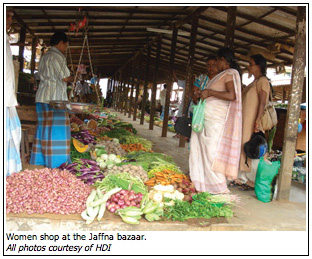 The circumstances were challenging. How does one implement a two-year mine-clearance and agricultural-development project in the middle of a war zone, less than 10 miles away from the front lines? Daily curfews, nightly mortar fire, early morning patrols, heavy roadblocks, and food and water shortages were among the obstacles. But that didn’t stop Jeanne Samuel, The Humpty Dumpty Institute’s Country Director in Sri Lanka, and her two colleagues, Richard Gerhard of The HALO Trust, a British nonprofit demining organization, and Matt Krause of Land O’Lakes, an American member-owned cooperative, from moving ahead and completing a project in Sri Lanka’s Jaffna Peninsula. “No matter how difficult [the project was],” Samuel says, “the fact that we have touched the lives of over 2,000 farmers and improved the well-being of their families has made all the challenges in getting there very worthwhile.”
The circumstances were challenging. How does one implement a two-year mine-clearance and agricultural-development project in the middle of a war zone, less than 10 miles away from the front lines? Daily curfews, nightly mortar fire, early morning patrols, heavy roadblocks, and food and water shortages were among the obstacles. But that didn’t stop Jeanne Samuel, The Humpty Dumpty Institute’s Country Director in Sri Lanka, and her two colleagues, Richard Gerhard of The HALO Trust, a British nonprofit demining organization, and Matt Krause of Land O’Lakes, an American member-owned cooperative, from moving ahead and completing a project in Sri Lanka’s Jaffna Peninsula. “No matter how difficult [the project was],” Samuel says, “the fact that we have touched the lives of over 2,000 farmers and improved the well-being of their families has made all the challenges in getting there very worthwhile.”
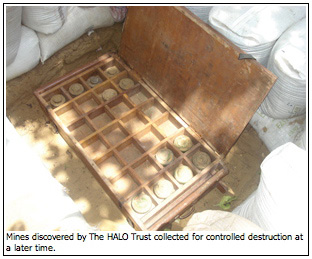 In May 2009, Asia’s longest running civil war finally came to an end. Since 1983, Sri Lanka had been in the throes of a war that raged through the north and the east of the country and at times spilled into the more populous parts of Sri Lanka, including some debilitating bombings in the capital city of Colombo. Tens of thousands of people fled their homes, and tens of thousands more were either injured or killed. Over the course of 27 years of fighting, both the Tamil separatists and the Sri Lankan military employed a multitude of weapons, including landmines used in a large-scale deployment.
In May 2009, Asia’s longest running civil war finally came to an end. Since 1983, Sri Lanka had been in the throes of a war that raged through the north and the east of the country and at times spilled into the more populous parts of Sri Lanka, including some debilitating bombings in the capital city of Colombo. Tens of thousands of people fled their homes, and tens of thousands more were either injured or killed. Over the course of 27 years of fighting, both the Tamil separatists and the Sri Lankan military employed a multitude of weapons, including landmines used in a large-scale deployment.
While the conclusion of the war is relatively recent, various international nongovernmental organizations have been working for years in the Jaffna Peninsula and in Sri Lanka’s war-torn cities, including Trincomalee and Batticaloa. In 2003, during a rare ceasefire, HDI’s President, Ralph Cwerman, took part in a special delegation organized by the One Sri Lanka Foundation, a nongovernmental organization. After assessing the landmine situation in northern Sri Lanka, Cwerman resolved to initiate a special project that would not only focus on mine clearance but also provide an opportunity for Jaffna residents, particularly farmers, to start working the land again to regain their livelihoods.
The Reality
“It took HDI a bit of time to put together a sensible and innovative plan that combined mine clearance with dairy development, find the right implementing partners, and secure funding to cover the costs of a two-year program, but we never wavered,” Cwerman says. “Our commitment to help the people of Jaffna had finally fallen into place.” In 2006, HDI secured a US$4 million grant from the U.S. Department of Agriculture Food for Peace program and officially launched the program in January 2007. “This was a pioneering project for HDI and its implementing partners. The holistic methods used and the approach of viewing mine clearance as part of USDA’s agricultural development had not been attempted before under such unique circumstances,” Cwerman says.
HDI partnered with HALO and Land O’Lakes through a tripartite agreement. HALO demined areas earmarked by the Sri Lanka Army as land that could be given back to the civilians. Once demined, Land O’Lakes provided technical expertise to dairy farmers to improve livestock management and increase the volume of milk available on the Peninsula. HDI managed and administered the process from start to finish. Just as the project was to begin, the ceasefire agreement between the Liberation Tigers of Tamil Elam and the Sri Lankan government broke down and fighting intensified. All of a sudden, HDI found itself in the middle of a war zone. As the majority of other international NGOs operating in Jaffna were leaving, HDI was entering the city, making it the only American NGO operating in Sri Lanka’s Jaffna Peninsula during that timeframe.
HALO had been operating in Jaffna since 2002 with a mandate to remove war debris, in particular landmines, unexploded ordnance, and weapons and ammunition from post-conflict zones. Employing more than 350 deminers in Sri Lanka and based largely in the north, HALO had cleared more than 36,000 landmines and thousands of UXO items from the country.
HALO in Sri Lanka took a special interest in this program. Richard Bowyer, one of HALO’s Program Managers at the time, recalls, “We were excited to be part of this project because it gave added impetus to the work we do. Although our primary aim is to get mines out of the ground so that communities can return to their land and use it in safety, [we find] the benefits are increased significantly when such clearance can be tied in with other development projects.”
On the dairy development side of the equation, HDI focused on about 2,000 small farmers, each owning a maximum of two cows, living on the Jaffna Peninsula. Although the area was heavily mined, the land was very suitable for dairy development. “The dairy industry in Jaffna was one of the most sustainable and lucrative industries for small farmers prior to the conflict,” explains HDI’s Sri Lankan Country Director, Jeanne Samuel, “but [during] the conflict, the industry was largely destroyed or disabled. In fact, there were hundreds of wild cattle roaming the causeway—all of which had been left behind by their owners years ago when fleeing the fighting. These cows were no longer productive—some grew too old to produce milk or became ill, and few were able to be reintroduced to the dairy market—but given their sheer numbers, one can only imagine how the industry thrived then.” With this knowledge in mind, HDI implemented a three-pronged humanitarian-relief action plan:
- Reduce the number of mine casualties through mine clearance and mine-risk education
- Declare mine-safe areas that could be used for the improvement of the dairy industry (grazing and crop cultivation)
- Facilitate the resettlement of internally displaced persons
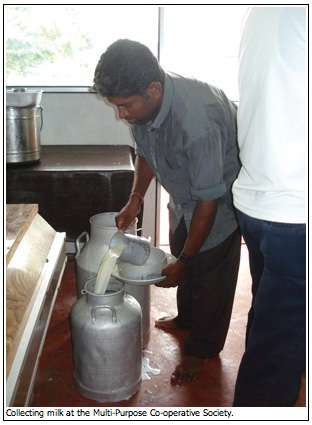 Two years later, despite encountering numerous difficulties, HDI met its goals. Approximately 128 acres of land were cleared of landmines and UXO, allowing former dairy farming areas to be returned to their original use. Following clearance, 2,000 dairy farmers regained access to land for grazing and crops, 334 local demining staff were trained and equipped with the specialized skills necessary for demining, and safe access to work, schools and farms was re-established for tens of thousands of Sri Lankans living on the Jaffna Peninsula.
Two years later, despite encountering numerous difficulties, HDI met its goals. Approximately 128 acres of land were cleared of landmines and UXO, allowing former dairy farming areas to be returned to their original use. Following clearance, 2,000 dairy farmers regained access to land for grazing and crops, 334 local demining staff were trained and equipped with the specialized skills necessary for demining, and safe access to work, schools and farms was re-established for tens of thousands of Sri Lankans living on the Jaffna Peninsula.
“Our members have been able to gain more from their cattle than they ever imagined,” T. Thangavel, President of the Farmers’ Organization, says in awe. “We have also learned to grow gliricidia1 and then mix straw,2 and even the palmyra fruit into the feed to make the milk thicker. The technical training has been so helpful that all our members are doing extremely well because we [can sell our milk for more money], and we can also give our children milk—something we couldn’t afford earlier.”
This sentiment is echoed by S. Vasanthadevi, a farmer who owns three cows, and K. Thanagamani, who learned about dairy farming in order to support her two young children following her husband’s death. “I didn’t know anything about cows,” says Vasanthadevi, “but I thought if I go and learn about the industry, I will be able to earn better than a laborer.” Selling her jewelry, Thanagamani purchased two cows and learned the necessary skills from the dairy program. She not only is now able to provide her children with a better education but is also happy that she can spend time at home with them.
According to HALO’s Bowyer, anti-personnel mines identified during this project in Sri Lanka were the Pakistani-manufactured P4, the Chinese Type 72 and the commonly used VS 50 from Italy that the Sri Lanka Army used. The Jony 95 and Jony 99 that planted the LTTE were also identified. HALO employed highly stringent safety practices and experienced no work-related casualties during the two-year program.
HALO deminer Mahalingam Jegatheevan reports, “We started our work by conducting a survey. While the Sri Lankan Army was able to give us an idea about areas it mined, we simply had no idea where LTTE may have mined. So we had to ask villagers about cattle or human accidents to figure out if that particular area was mined.”
Another obstacle was that the high mineral content in the ground caused detectors to give off false-alarm signals, forcing HALO to clear most areas manually, a painstaking and time-consuming process. In addition, while there was a definitive pattern in how the Sri Lanka Army laid the mines, leaving approximately a four-foot walking belt lined by mines laid in a 3+1 pattern on either side, the LTTE’s laying of mines was completely random, which made it harder to find and remove them.
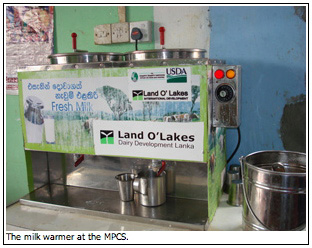 Over the course of the two-year program, HALO covered the areas of Chavakachcheri, Kopay, Sandilipay, Tellippalai, clearing 520,000 square meters (128,000 acres) and removing 694 mines. With more than 2,000 dairy farmers and their families directly or indirectly benefiting from the cleared lands, HDI’s other implementing partner, Land O’Lakes, established a number of partnerships within the dairy farming industry in Jaffna, including the multi-purpose cooperatives and Jaffna District Development Co-operative Society (YARLCO), a previously stagnant dairy co-op that was on its last leg.
Over the course of the two-year program, HALO covered the areas of Chavakachcheri, Kopay, Sandilipay, Tellippalai, clearing 520,000 square meters (128,000 acres) and removing 694 mines. With more than 2,000 dairy farmers and their families directly or indirectly benefiting from the cleared lands, HDI’s other implementing partner, Land O’Lakes, established a number of partnerships within the dairy farming industry in Jaffna, including the multi-purpose cooperatives and Jaffna District Development Co-operative Society (YARLCO), a previously stagnant dairy co-op that was on its last leg.
These partnerships within the Jaffna dairy industry ultimately ensured its sustainability and served as a major achievement for HDI and Land O’Lakes. Coordinating the project through the Ministry of Livestock Development and through HDI management, Land O’Lakes initiated a total collection of 29,000 gallons (110,000 liters) of milk per month, an increase in capacity of nearly 40 percent. “Although we have similar projects in Indonesia and Thailand, this is the first time Land O’Lakes was working in an insecure area like Jaffna,” says Country Director of Land O’Lakes Dairy Development Matthew Krause. “We were working through curfews, which made milking cows early in the morning an impossible task. Our staff had to put in shorter days; there were road blocks, intense security and the closure of the A9 highway, [which] meant we couldn’t get our equipment and samples in time. At the same time, however, local authorities in Jaffna gave us immense support, especially in [helping us] obtain the necessary approvals.”
Given the farmers’ lack of knowledge in milk-production techniques, Land O’Lakes started with creating awareness and then disseminating technical skills and best practices. “Our project had three components—control, management and marketing,” explains Krause. “About 10 extension agents and a veterinary surgeon managed the first objective, which was to increase milk production, and thereby income, at the farm level. By increasing the price from 121 rupees ($1.07 as of 7 June 2010) per gallon to 151 rupees ($1.33) per gallon on average, farmers [earned] more for their milk and thus began selling more.” Using the network of the Jaffna-based dairy cooperative, YARLCO, and the Livestock Breeders Co-operative Society, the program facilitated the collection and purchase of the milk, as well as production of additional dairy products.
“This [program] was aimed at capacity building,” says Krause, adding that milk production and collection increased by 45 percent per month, steadily rising over the entire 27-month project. The cooperative made a profit for the first time in 25 years with record sales. “None of this would have been of any use without a concerted marketing effort. So we recruited a senior marketing manager from the private sector and created a portfolio of about 12 different items which included yogurt, flavored milk, ice cream, paneer, ghee and curd, in addition to selling fresh milk, retail and wholesale. We opened up different market segments with new packaging and branding and [held] marketing events and launches.”
HDI also provided additional dairy equipment, including milk heaters, cold-storage facilities and ice-cream machines. “Twenty percent of the milk collected was converted into value-added products. We built the entire supply-and-demand chain—because otherwise, the farmers would not have had the wherewithal to market their milk. The entire project was conceptualized around building and bridging the [knowledge] gap, working with the existing farmers, the organizations and the [local] culture to give them incentives.”
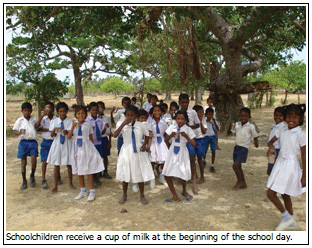 Milk is now abundant in the Jaffna Peninsula. Not only have the farmers increased their income, but the children have benefited from better nutrition. Earlier, a farmer would produce just enough milk from a cow to sell to eke out an existence. Now, he can afford to share the milk with his children. “Indirectly, the project is also developing the mental and physical strength of these farmers’ children, which [bodes] well for creating a strong and healthy future generation,” Samuel states.
Milk is now abundant in the Jaffna Peninsula. Not only have the farmers increased their income, but the children have benefited from better nutrition. Earlier, a farmer would produce just enough milk from a cow to sell to eke out an existence. Now, he can afford to share the milk with his children. “Indirectly, the project is also developing the mental and physical strength of these farmers’ children, which [bodes] well for creating a strong and healthy future generation,” Samuel states.
All in all, approximately 400,000 gallons (1.5 million liters) of milk were collected in the two years, with 35,000 gallons (132,486 liters) going into value- added products, such as yogurt. At the same time, nearly 5,000 farmers received initial training; one-on-one visits, workshops, meetings and discussions were held throughout the period to enhance productivity and capacity. Ten model farms and nine milk-collection centers were established, and 11 collection centers were renovated.
The farmers were introduced to proper milk-production methods, ensuring that milk was collected routinely every day. Young men collected milk from the outlying farms and transported it, primarily on motor bikes, to the market in Jaffna. In addition, a series of smaller dairy cooperatives were linked to the main processing center, which allowed for quicker milk delivery to the market. This was of great importance because operating a milk business in a war zone created several obstacles, including that military checkpoints would keep runners from moving, sometimes resulting in the milk spoiling.
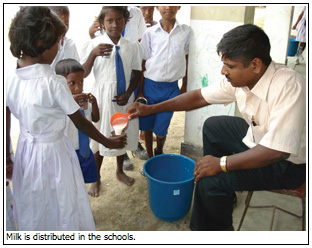 Together with its partner, the One Sri Lanka Foundation, HDI further augmented its program in the Jaffna Peninsula by developing an ongoing school feeding program in the remote island of Velanai, off the coast of the Peninsula. HDI purchases milk from 36 farmers through the Multi-Purpose Co-operative Society and provides fresh milk to five schools (with 10 more in the pipeline), serving nearly 500 children between the ages of 5 and 16. Fresh milk is collected from the farmers and distributed to the children at their morning break. General Manager P. Selvarani and Consumer Manager S. Thanabalasingham of the MPCS have supported the project enthusiastically and revealed that YARLCO began by collecting just over six gallons (22.7 liters) per day, and now has expanded to over 35 gallons (132 liters). “Of this total collection, we distribute about 16 gallons (60 liters) for the school feeding project,” says Selvarani. “The farm gate3 value is 37 rupees (US$0.33), and HDI purchases it from us at 173 rupees ($1.53) per gallon. The balance is sold to the public and also to the Samurdhi feeding project. Farmers could bring in anything from half a gallon to almost two gallons per day, and we purchase whatever milk each farmer brings, no matter how small the quantity.”
Together with its partner, the One Sri Lanka Foundation, HDI further augmented its program in the Jaffna Peninsula by developing an ongoing school feeding program in the remote island of Velanai, off the coast of the Peninsula. HDI purchases milk from 36 farmers through the Multi-Purpose Co-operative Society and provides fresh milk to five schools (with 10 more in the pipeline), serving nearly 500 children between the ages of 5 and 16. Fresh milk is collected from the farmers and distributed to the children at their morning break. General Manager P. Selvarani and Consumer Manager S. Thanabalasingham of the MPCS have supported the project enthusiastically and revealed that YARLCO began by collecting just over six gallons (22.7 liters) per day, and now has expanded to over 35 gallons (132 liters). “Of this total collection, we distribute about 16 gallons (60 liters) for the school feeding project,” says Selvarani. “The farm gate3 value is 37 rupees (US$0.33), and HDI purchases it from us at 173 rupees ($1.53) per gallon. The balance is sold to the public and also to the Samurdhi feeding project. Farmers could bring in anything from half a gallon to almost two gallons per day, and we purchase whatever milk each farmer brings, no matter how small the quantity.”
“We are very proud of this home-grown school feeding program,” says HDI’s Cwerman. The program uses HDI’s development approach, leveraging one development activity—mine clearance—into a second—dairy development—and finally into a third—school feeding. “This has become HDI’s signature approach to development.”
“The challenges have been many,” sums up Land O’Lakes’ Program Coordinator Mariathasan Elango, “but the rewards far surpass the downsides. The progressive thinking employed by HDI in uplifting an entire industry has seen manifold advantages in a highly marginalized society that has been traumatized, battle-scarred and reduced to poverty. This project has become a learning model for other countries—not only in gaining better yields and accentuating marketing avenues, but in how to build an entire industry in a post-conflict environment.”
